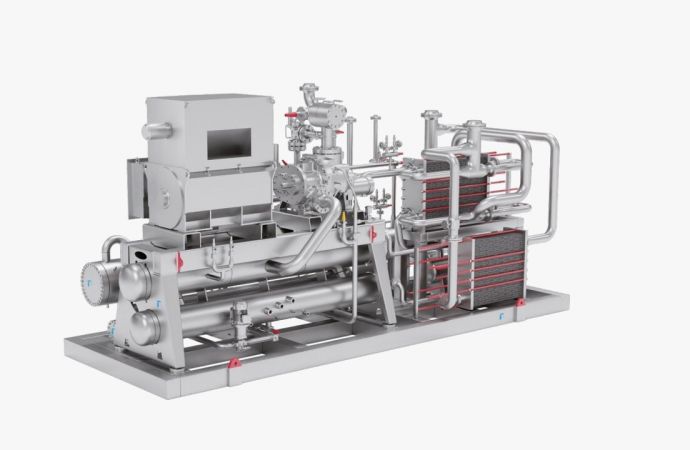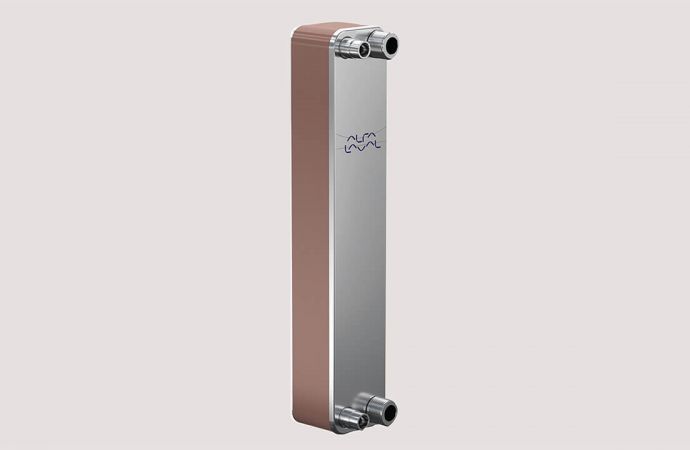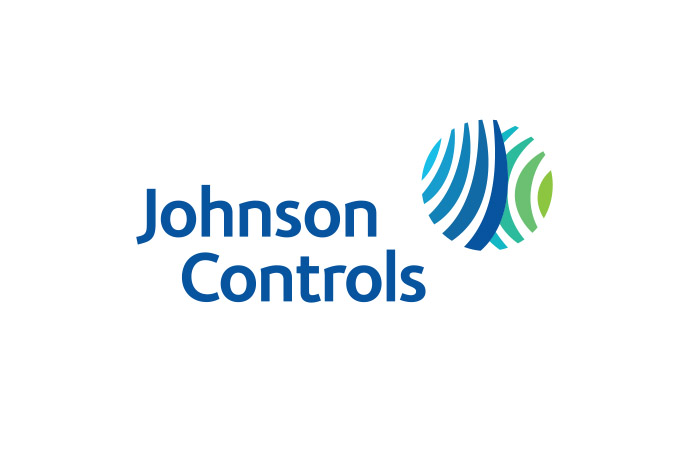The new 273 S ammonia heat pump can deliver up to 95°C heat with ‘minimal energy needed.’

The 273 S high-temperature ammonia heat pump from Sabroe.
Danish OEM Sabroe – a brand under Johnson Controls – has launched the 273 S, a high-temperature ammonia heat pump, capable of delivering 95°C (203°F) heat with “minimal energy needed.”
Sabroe touts the 273 S as a “highly efficient” and compact heat pump, optimized for large-scale ammonia heat pump installations and ideal for district heating systems.
“Our high-pressure 273 compressor was developed specifically for heat pump applications,” said Per Skov, Heat Pump Product Manager at Johnson Controls, in a post on LinkedIn. “We spent years testing and optimizing the compressor unit and heat pump to ensure exceptional reliability, high efficiency, and long service life to ensure a minimum of downtime and lowest cost of operation.”
The 273 S high-temperature ammonia heat pump sports screw compressors with a new “optimized rotor profile in a very robust design ensuring exceptional reliability, low deflection, high efficiency and long service life,” according to a Sabroe product brochure.
It has capacities from 4 to 7MW, and can be configured with different heat-exchanger layouts, in both single- and two-stage solutions. The ammonia heat pump is flexible and capable of utilizing high-temperature heat sources, operating in cascade or using low-temperature heat in a two-stage solution, said Sabroe. It can also use reclaimed waste heat.
In a single-stage configuration, the 273 S has a COP between 3.7 and 5.4, depending on the input and output temperatures required. In a two-stage configuration, it can achieve a COP between 2.9 and 3.4, according to the Sabroe product brochure.
The 273 S is not the first ammonia heat pump from Sabroe suitable for district heating systems. In December of last year, a Danish district heating provider replaced a 10-year-old CO2 heat pump with a 716 HPX ammonia model from Sabroe, increasing its system COP from 3 to an annual average of 5 – 5.5.Want to find out more, or have something to say about this story? Join the ATMO Connect network to meet and engage with like-minded stakeholders in the clean cooling and natural refrigerant arena.
Related stories




